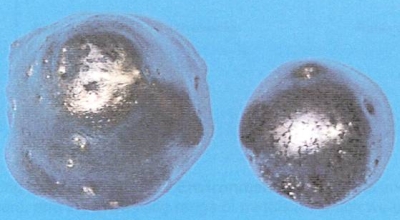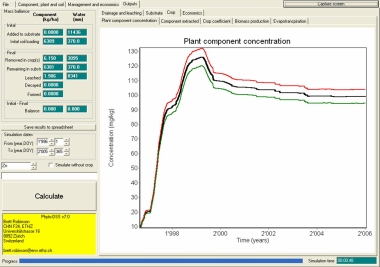Phytomanagement: phytomining
Phytomining describes the exploitation of sub-economic ore bodies using plants. Would-be phytominers grow a crop of a metal-hyperaccumulating plant species, harvest the biomass and burn it to produce a bio-ore. The first phytomining experiments were carried out by Larry Nicks and Michael Chambers at the US Bureau of Mines, Reno, Nevada using the nickel (Ni) hyperaccumulator Streptanthus polygaloides and it was found that a yield of 100 kg/ha of sulphur-free Ni could be produced.
The Ni-hyperaccumulators Alyssum bertolonii from Italy and Berkheya coddii from South Africa have even greater potential to extract Ni, because of their high biomass and high Ni content. Soil conditioners, particularly N and P amendments, greatly enhance Ni phytomining. On many ultramafic soils, Berkheya coddii can yield over 20 t/ha with a Ni concentration of 1% in the dry matter.
Assoc. Prof. Chris Anderson, Massey University has also induced plants to hyperaccumulate gold by adding lixivants to the substrate. Such lixivants have induced Brassica juncea to accumulate gold to concentrations of over 100 mg/kg gold on a dry matter basis.
Unusual hyperaccumulation (>500 mg/kg dry mass) of thallium (Tl) has been determined in Iberis intermedia and Biscutella laevigata (Brassicaceae) from southern France. The Iberis contained up to 0.4% Tl (4000 mg/kg) in the whole-plant dry matter and the Biscutella over 1.5%. Phytomining using Iberis, could produce a net return of $ US 1200/ha (twice the return from a crop of wheat) with a biomass yield of 10 t/ha containing 0.08% Tl in dry matter. The break-even point (net yield of $ US 500/ha) would require 170 mg/kg (0.017%) Tl in dry matter.
Phytomining has the following unique features:
- It offers the possibility of exploiting ores or mineralised soils that are uneconomic by conventional
mining methods. - ‘Bio-ores’ are virtually sulphur-free, and their smelting requires less energy than sulphidic ores.
- The metal content of a bio-ore is usually much greater than that of a conventional ore and therefore requires less storage space despite the lower density of a bio-ore.
- Phytomining is a ‘green’ technology that should appeal to the conservation movement as an alternative to opencast mining of low-grade ores.
Currently, phytomining has only limited potential application (see our 2015 article below). However, he economic viability of phytomining improves as the price of metals increases. With China’s booming economy, metal prices are set to increase further. The financial attractiveness of phytoming should increase, particularly if it can be combined with other technologies such as phytoremediation and biofuel production.

